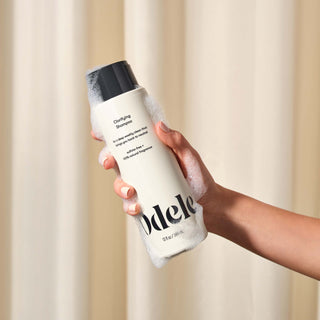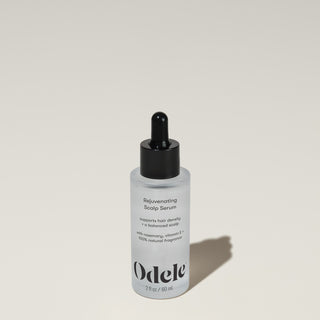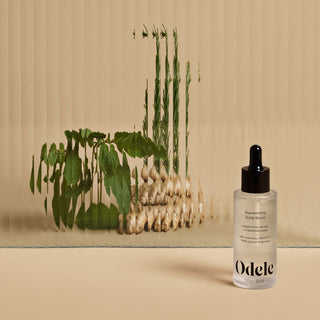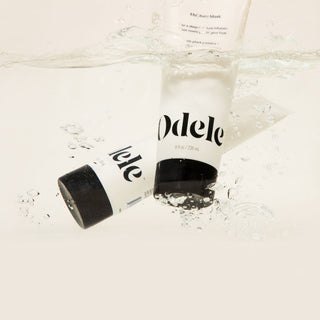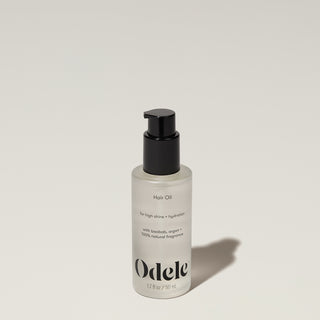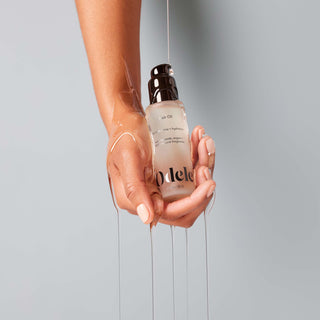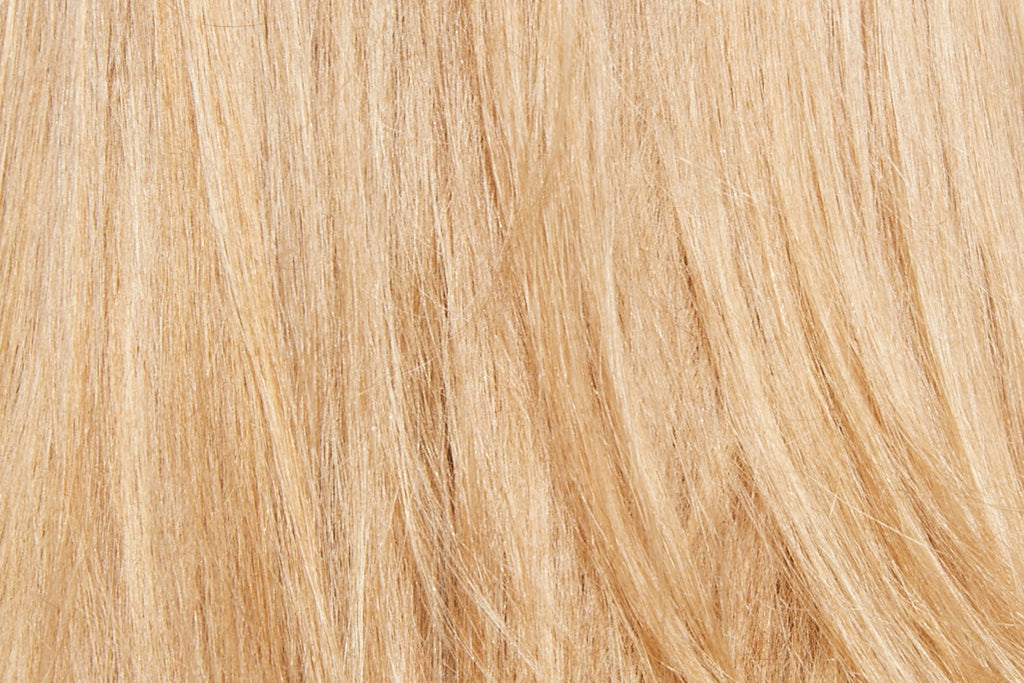Ever wonder why some products seem to work magic for others but fall flat on your hair? It might come down to porosity. Hair porosity is a major factor in how your strands absorb and retain moisture—and understanding your hair’s porosity can completely change the way you care for your hair.
In this quick (but super helpful) guide, we’ll walk you through how to identify your porosity type and, more importantly, how to use that knowledge to give your hair the TLC it needs.
What is hair porosity?
Hair porosity is your hair’s ability to absorb and retain moisture. It affects how products interact with your strands, how hydrated your hair feels and even how long your style holds up.
To really get how hair porosity works, it helps to understand the basics of what your hair is made of. Each strand has three main layers:
- Cuticle: This is the outermost layer—the protective shell. It’s made up of overlapping cells (kind of like roof shingles) that help keep moisture in and damage out.
- Cortex: The thickest part of the strand, this layer holds your hair’s pigment and structure. It’s where moisture and nutrients need to go to make your hair feel soft, strong and healthy.
-
Medulla: The innermost layer. Not everyone has it (usually it’s found in medium to coarse hair), and that’s totally normal.
Here’s where porosity comes in: For your hair to stay healthy, moisture and nutrients need to pass through the cuticle and into the cortex. If the cuticle layer is super tight and flat, it’s harder for moisture to get in. That’s low porosity, and it can leave your hair feeling dry or product-heavy, even when you’re using all the right things.
On the flip side, if the cuticle is lifted or more open, moisture can enter easily—but it also escapes just as fast. That’s high porosity, and it often shows up as frizz, dullness or that “dry no matter what” feeling, even after conditioning.
Knowing your porosity makes it easier to give your hair what it really needs.

How to find your hair porosity
The easiest way to check your porosity at home? The float test: Start with a clean, dry strand of hair (no product on it). Drop it into a glass of water. Wait 2–4 minutes and see what happens:
- Floats at the top? Low porosity
- Floats in the middle? Medium (or normal) porosity
- Sinks quickly to the bottom? High porosity
Got your result? Let’s break down what it means.
All about the hair porosity types
Low porosity hair
M.O.:
- Water and products hang out on top—they don’t sink in easily.
- Air-drying? Be prepared to wait… and wait.
- Easily weighed down, especially by heavy creams or oils.
- Can feel slick or greasy if overloaded.
What it needs: Low porosity hair has tightly packed cuticles, making it tough for moisture to get in—but once it’s in, it stays. Your focus should be on opening the cuticle gently and using lightweight, buildable hydration.
Care tips:
- Use warm water to help open the cuticle before washing.
- Clarify regularly to prevent buildup.
- Stick to lightweight, water-based conditioners and stylers that absorb easily.
Try:
- Clarifying Shampoo: Clears away product buildup so your hair can soak up moisture better
-
Air Dry Styler: Defines and smooths hair with a soft, touchable finish—no heaviness or crunch
Medium porosity hair
M.O.:
- Soaks up moisture and keeps it locked in
- Styles and color stay put without fuss
- Doesn’t dry too quickly or too slowly
- Has that naturally healthy, shiny look
What it needs: Medium porosity hair is the sweet spot—your cuticle is slightly open, allowing moisture to get in and stay put. Your focus? Keeping things balanced with regular hydration and some light strengthening when needed.
Care tips:
- Stick with a steady routine that keeps moisture levels balanced.
- Deep condition weekly or as needed to keep hair strong and healthy.
- Go easy on heat and chemical treatments—they can make your hair more porous over time.
Try:
- Volumizing Foam: A lightweight styling foam that gives lasting hold and protects against heat (up to 450°F)
- Rejuvenating Scalp Serum: Nourishes where it counts to help promote healthier, thicker-looking hair
-
Moisture Mask: A once-a-week deep treatment to promote softness and strength, perfect for keeping medium porosity hair balanced
High porosity hair
M.O.:
- Drinks up moisture quickly—but loses it just as fast
- Air-dries in a flash (sometimes before you want it to)
- Can get frizzy and tangled easily
- Often shows signs of color or heat damage
What it needs: High porosity hair has gaps and tears in the cuticle layer, which can be genetic (curly/coily hair often falls here) or caused by damage. It needs rich, reparative moisture and a bit of protein to fill in those gaps. Your goal is to replenish and seal that moisture in while minimizing further stress.
Care tips:
- Layer products (think: leave-in + oil or cream) to lock in hydration.
- Focus on rich, nourishing formulas with ingredients.
- Limit heat styling, and always use a heat protectant.
- Try a cool rinse after conditioning to help seal the cuticle.
Try:
- Moisture Repair Shampoo + Conditioner: A damage-repairing duo that helps hydrate and strengthen from the inside out (best for medium to coarse hair types)
- Moisture Mask: Deeply replenishes and smooths high porosity hair that needs extra TLC
- Leave-In Conditioner: A must for sealing in moisture post-shower
-
Hair Oil: Helps seal split ends, reduce frizz and add healthy shine
Can you change your hair porosity?
Porosity is largely genetic, which means your hair’s natural ability to absorb and hold moisture is built into its structure. But environmental damage and how you treat your hair can shift things over time.
What raises porosity?
Heat styling tools, chemical processes like coloring or relaxing, and sun or chlorine exposure can all lift or damage the cuticle. When cuticles become raised or cracked, your hair becomes more porous, making it harder to hold onto moisture and easier to get dry, frizzy or brittle.
Can you lower porosity?
You can’t permanently seal those cuticles, but regular moisturizing and protein treatments help smooth and strengthen them, making it easier for your hair to hold onto hydration. Gloss treatments are another effective option for enhancing shine and smoothing the cuticle (professional application at a salon is recommended for the best results). Using gentle shampoos and steering clear of harsh chemicals can also support healthier cuticles in the long run.



